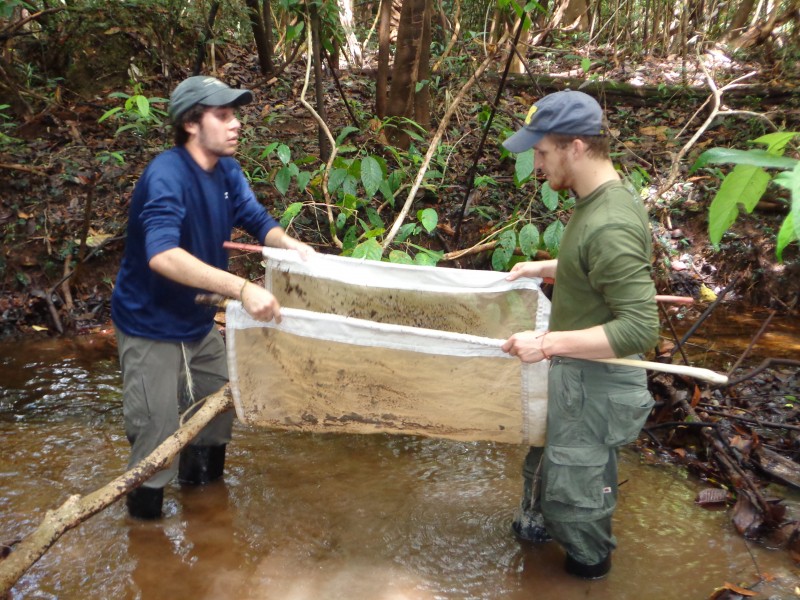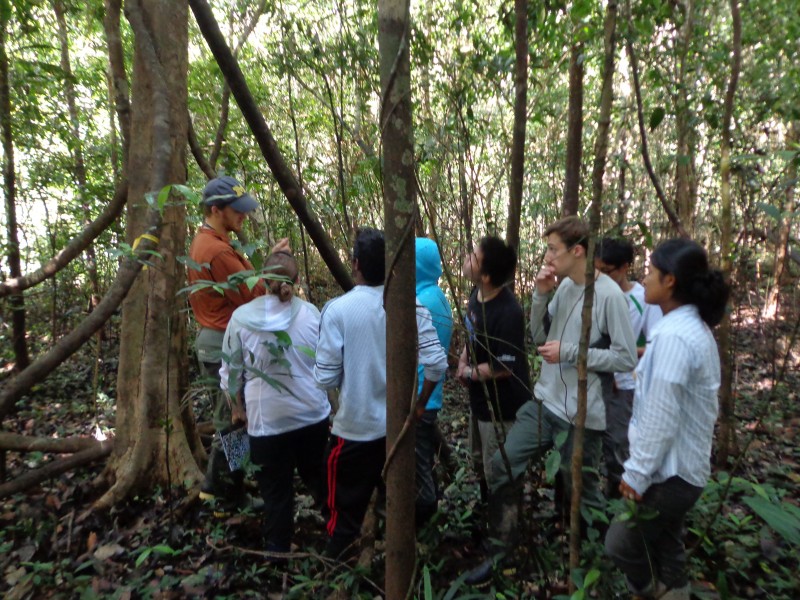Unlocking the Secrets of the Rain Forest
From Kenyon News - October 4, 2013
When biology professor Kathryn Edwards says “remote,” she means remote – as in six hours by boat to the nearest city. But within the isolation of the Peruvian Amazon floodplain is believed to be the largest diversity of organisms on Earth, an area ripe for research.
So Edwards gathered three Kenyon students to study species diversity and water quality this past summer.
Every day for three weeks, Walker Hudobenko ’14, Helen Rogers ’15 and Noah Winters ’15 rose at 5:30 a.m. to mark trees and gather insects for cataloging and to collect water samples in the National Tamshiyacu Preserve. The goal, said Edwards, was to research a place that has been little studied, an area that is virtually underwater from torrential rainfall four months out of the year.
“The ecology of the area changes between the seasons. It’s drastic,” said Edwards, who was also able to bring a student and teacher from North Ridgeville High School near Cleveland on the trip.
The trees, it turned out, were the biggest challenge. Traditional methods for identifying trees – looking at leaves and their growing patterns – wouldn’t work because the branches grow so high from the ground, they’re not readily distinguishable in the canopy. The students had to resort to getting DNA from bark samples, but even that proved difficult because the bark at ground level was decayed from being under water for so many months. The students had to get samples from higher up the trunk.
“We spent hours scraping bark and extracting powder,” said Edwards. “It should tell us something about the diversity [of the trees].”
But the trip wasn’t all grueling work. The students had opportunities to fish, to search for tree frogs and tarantulas, and to learn basket weaving from the locals.
“They loved staying up at night, trying to talk to the guides in Spanish,” said Edwards of the students.
And while the seclusion of the location had been a concern to Edwards, it didn’t end up being a big factor for the students.
“I kind of liked it,” said Hutobenko, a biology and political science double major from Brooklyn. “We were in the middle of nowhere, and it was great.”
What did work against them was time.
“The hardest part was trying to get the research done,” said Rogers, a biology major with an emphasis in environmental studies from Cincinnati. “I could have stayed three months.”
But because of the short duration of the trip, the remoteness didn’t seem as daunting to her – even though it was her first time out of the U.S.
“Since it was a small amount of time, trade-offs in isolation were worth it,” she said.
And the rewards, the students said, far outweigh any inconvenience they may have encountered.
“Going on the trip made me recognize the breadth of life around you -- here as well,” said Winters, a biology major from Tallmadge, Ohio.
“You don’t recognize what we have here.”

